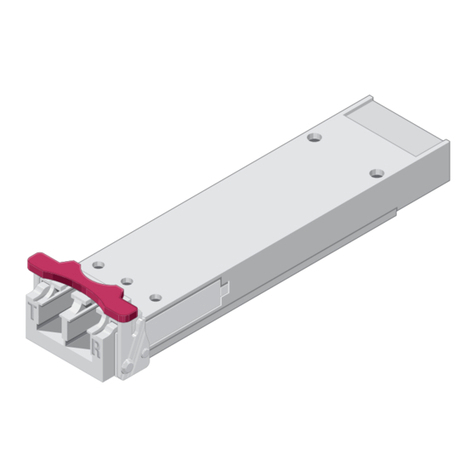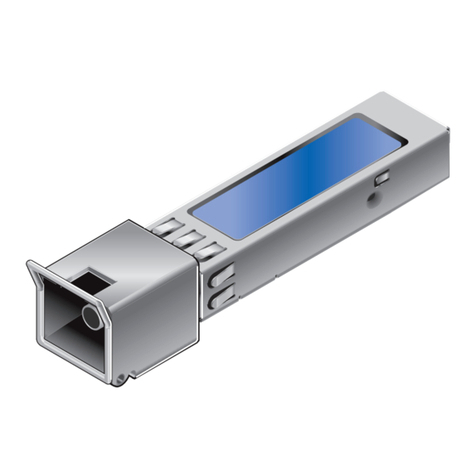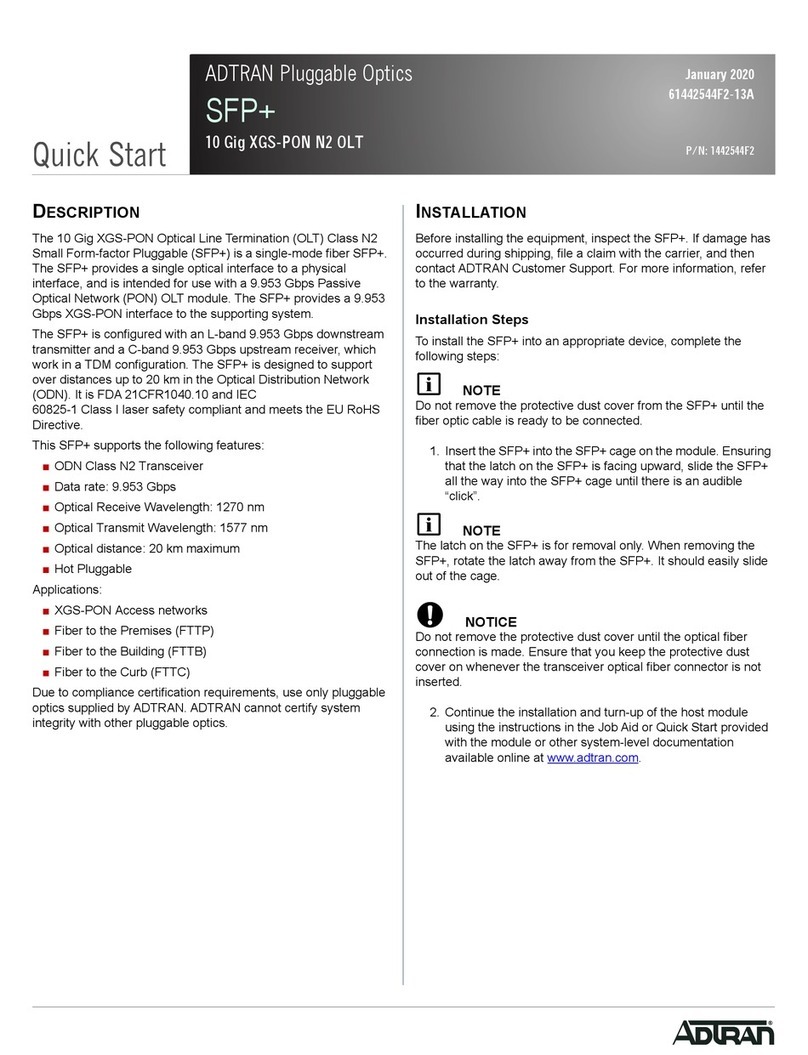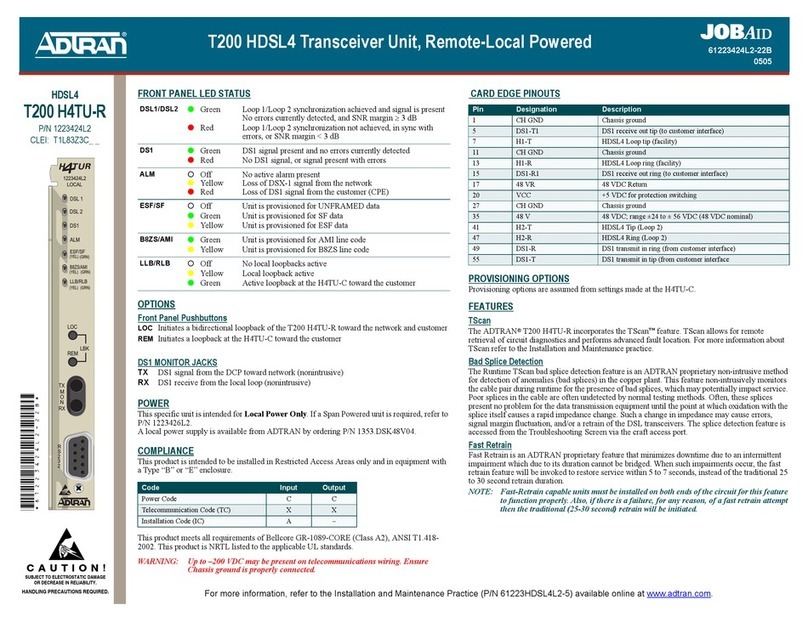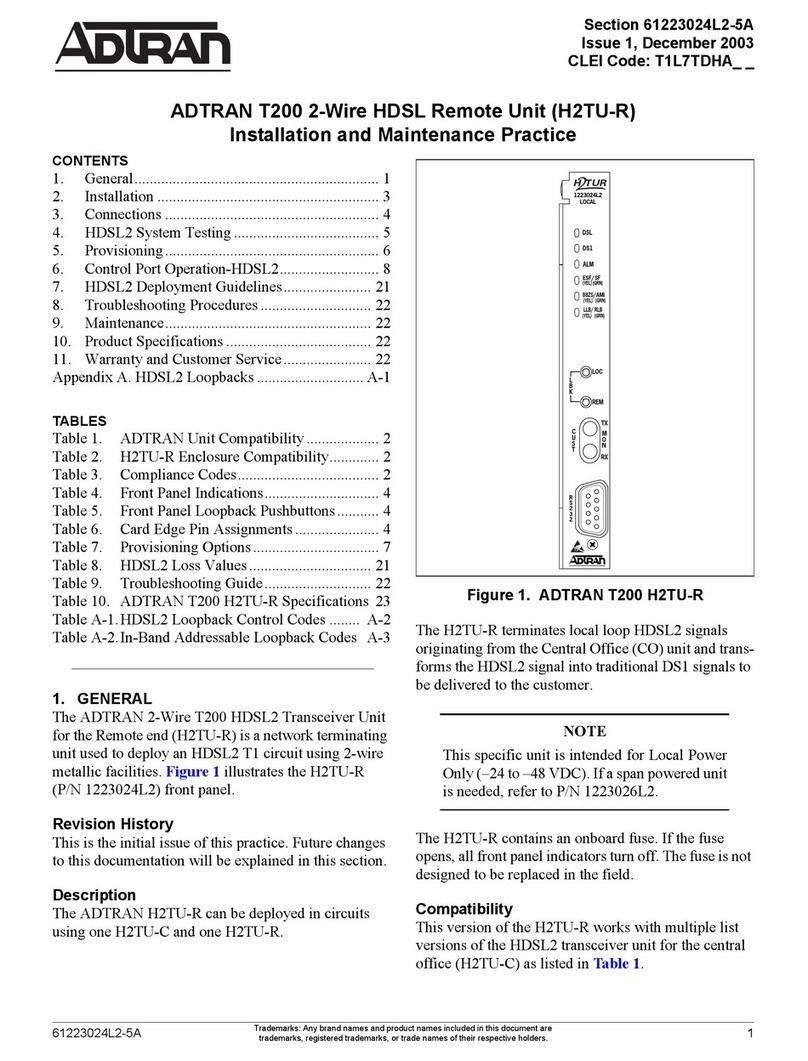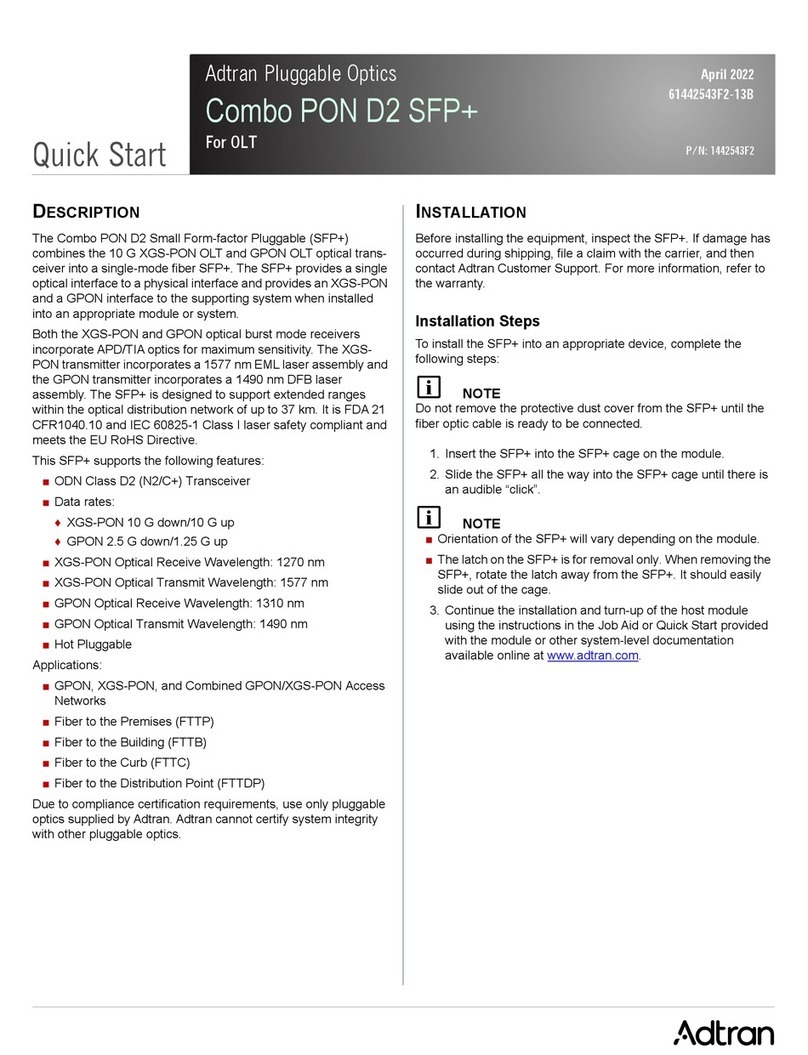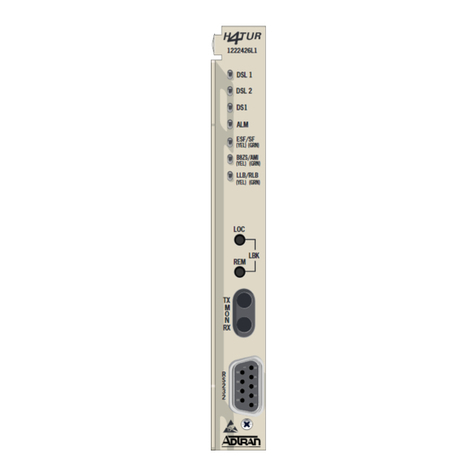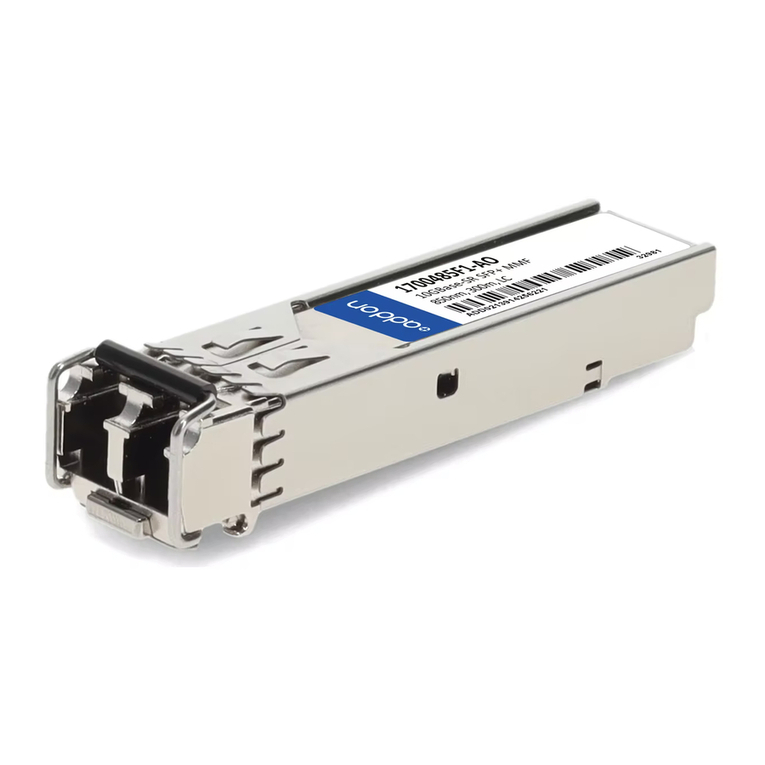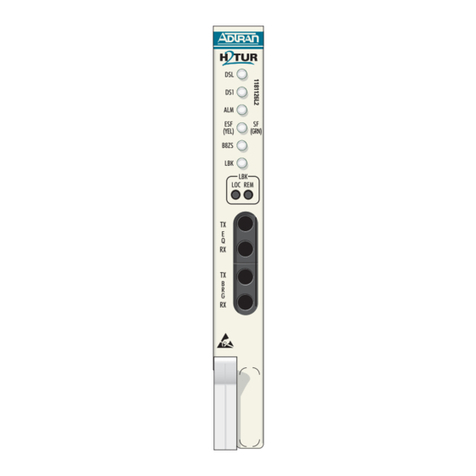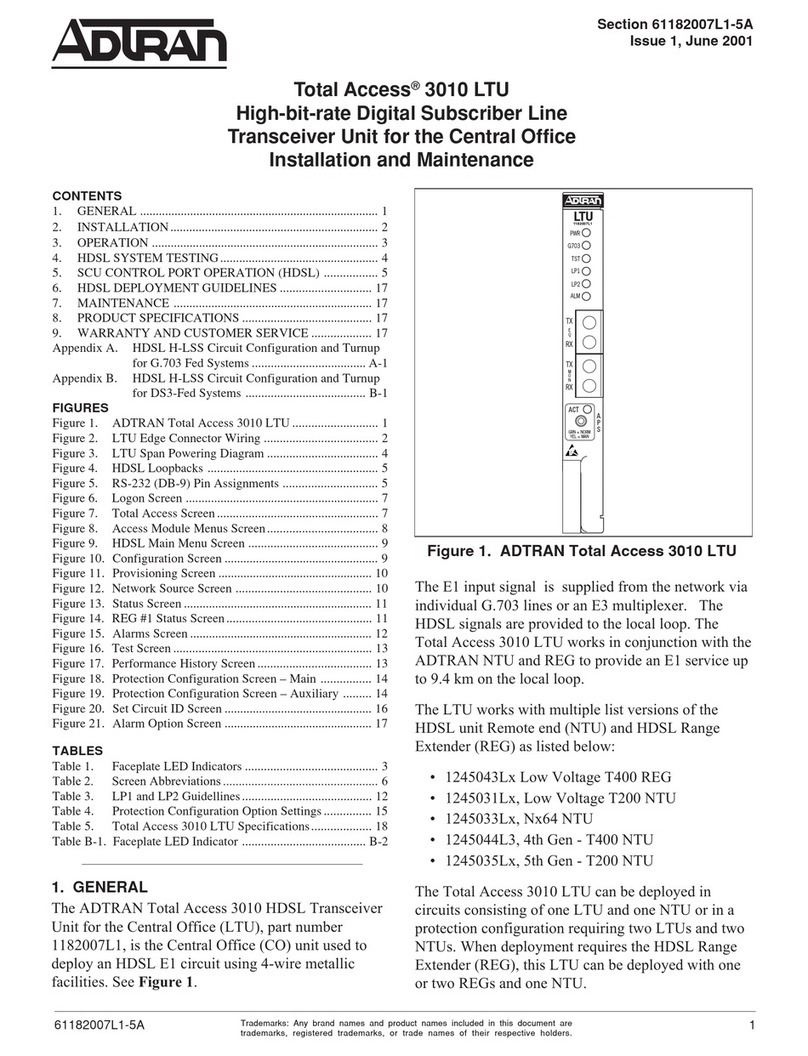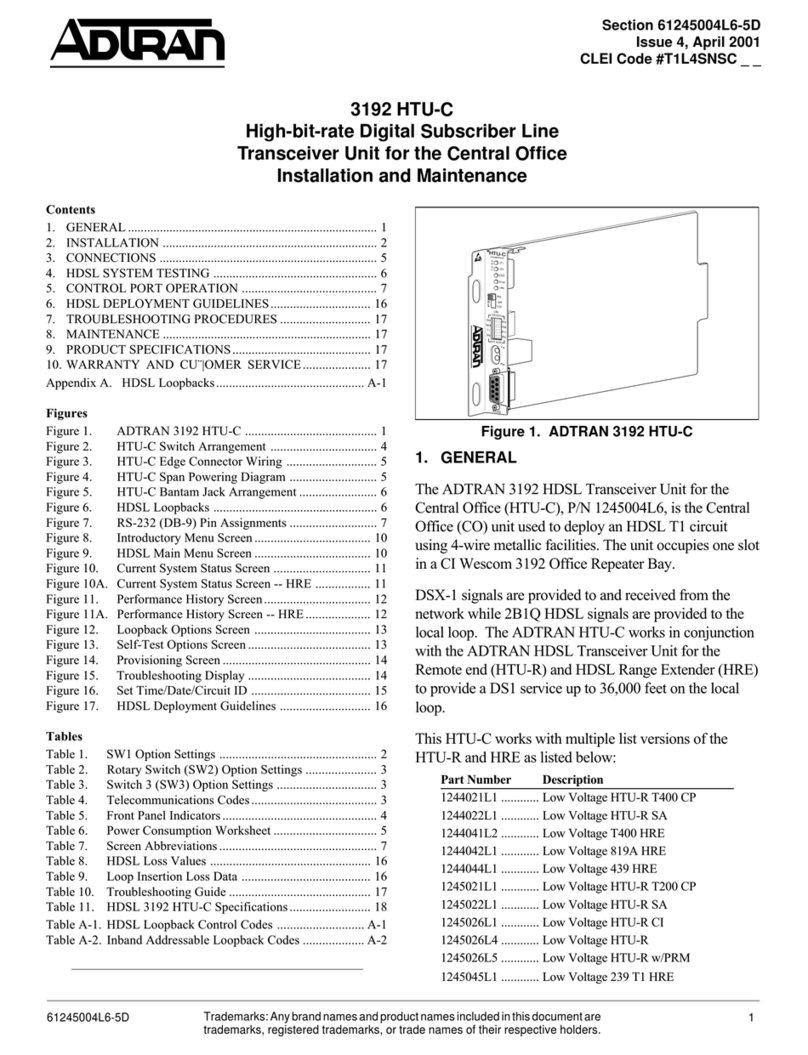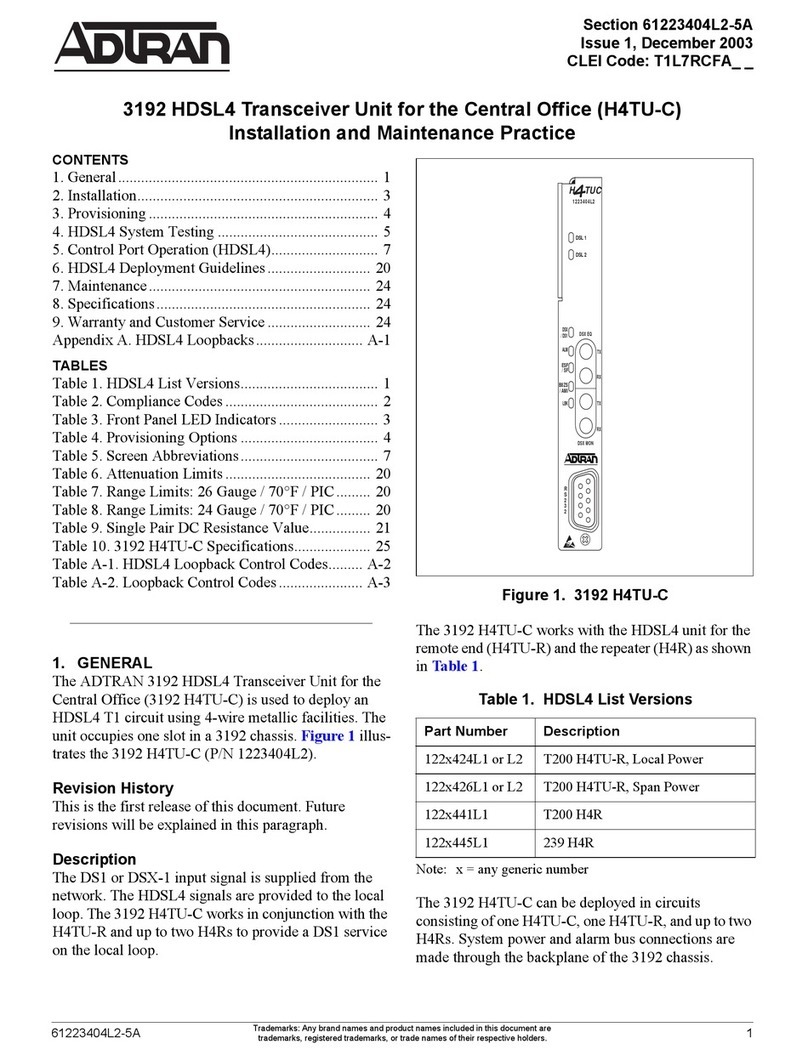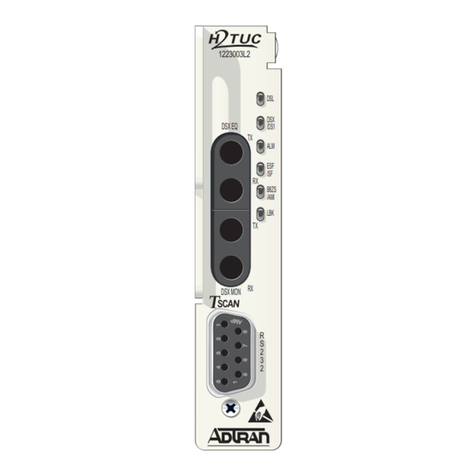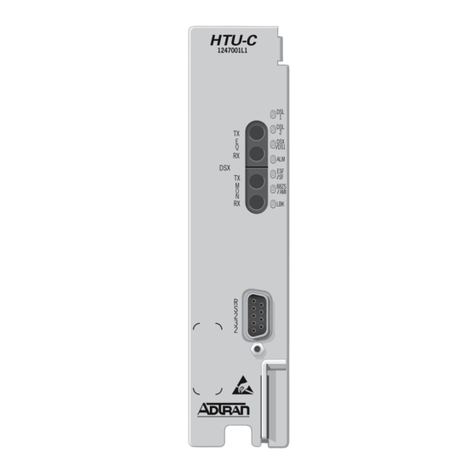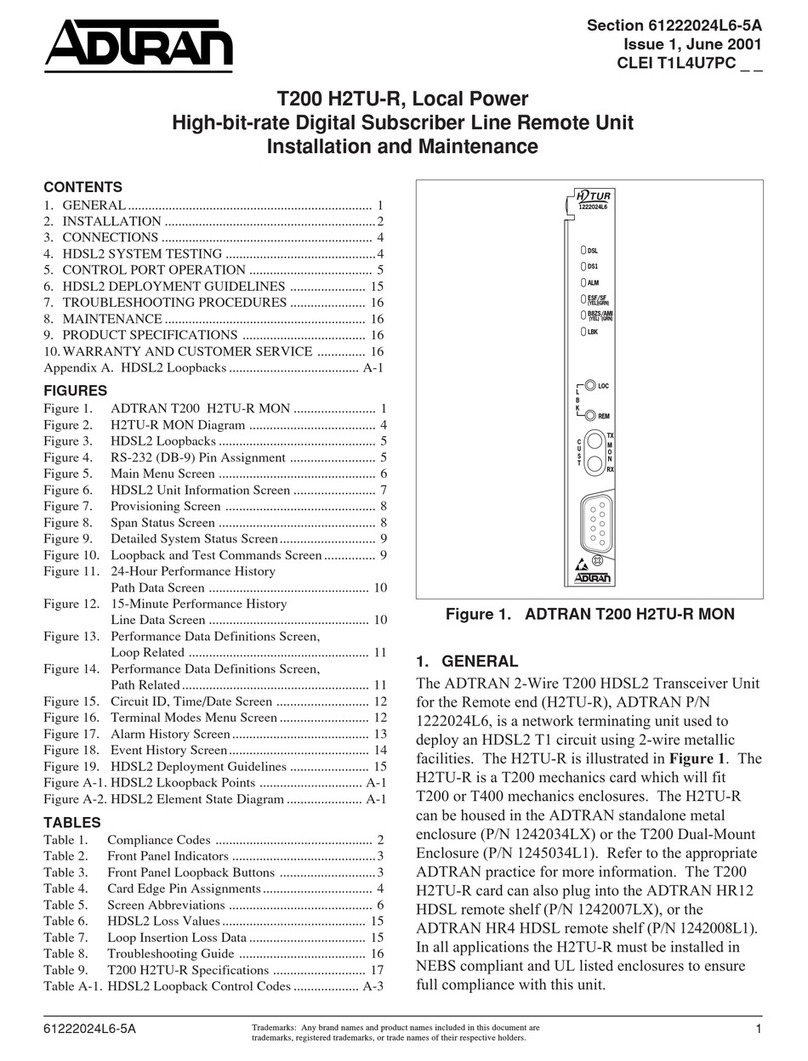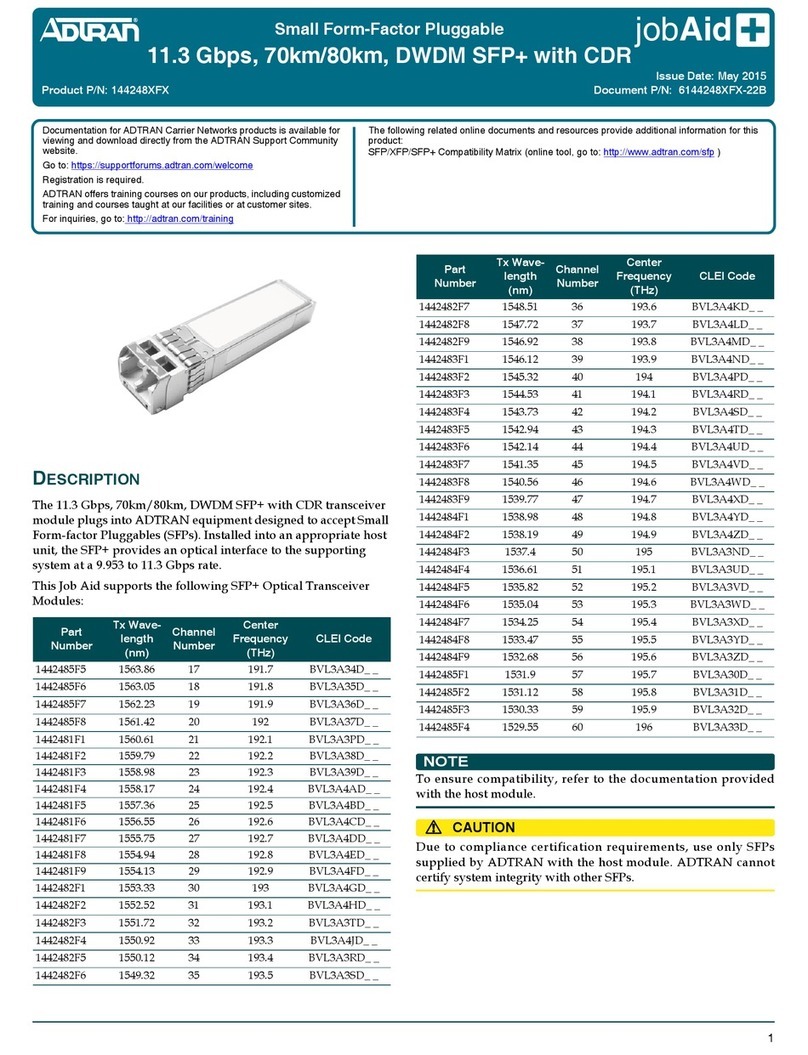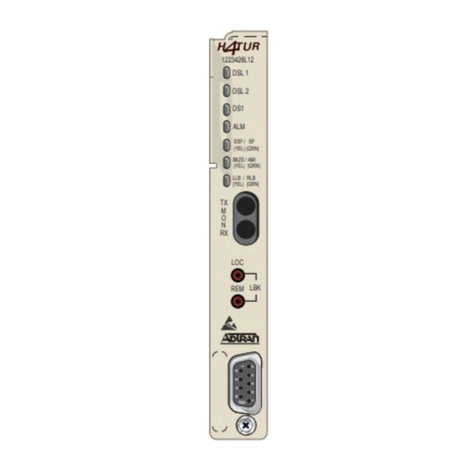
7Section 61245001L7-5, Issue 161245.001L7-5A
HTU-R, and HRE. This scenario was chosen for
inclusiveness of functionality. However, other
configurations are possible and their displays will vary
slightly from those shown in this section.
Aterminal sessionis initiated byentering multiple space
barcharacters,whichareusedbytheHTU-Ctodetermine
the speed of the terminal. Once the speed has been
determined, an Introductory Menu is presented, as
illustrated in Figure 7.
From the Introductory Menu, the Main Menu may be
selected. The Main Menu provides access to detailed
performanceandconfigurationinformation,asillustrated
in Figure 8, HDSL Main Menu Screen.
From the Main Menu, the following screens can be
accessed.
1. Current System Status
2. Performance History
3. ADTRAN Information
4. Loopback Options
5. Self Test
6. Provisioning
7. Troubleshooting
TheCurrentSystemStatusscreenillustratedinFigure9
provides quick access to status information for both the
HTU-C and HTU-R. By pressing H, the Current System
Status screen for the HRE will be displayed. See Figure
9A for the HRE Current System Status screen.
The Elapsed Time display indicates the period of time
sincetheunitbegancollectingperformanceinformation.
Ateach 15-minute interval,theperformance information
istransferredtothe15-minuteperformancedataregister
accessedfromthePerformanceHistoryscreen. Ateach
24-hourinterval,theperformancedataistransferredinto
the 24-hour performance data register also accessed
usingthePerformanceHistoryscreen. ThePerformance
HistoryscreenisshowninFigure 10. By pressing H, the
PerformanceHistoryscreenfortheHREwillbedisplayed.
SeeFigure10AfortheHREPerformanceHistory screen.
By pressing the letter Zat the Current System Status
screen,thecurrentperformanceregisterswillberesetto
zero on the Current System Status screen and
Performance History screen.
Figures 9 and 9A consolidate current information for the
HDSL,DSX-1,andDS1interfaces. Akeytotheinformation
provided is found in the center of the screen. Arrows
indicate the key applies to both the HTU-C and HTU-R.
LOSS ................. Pulse Attenuation Measurement *
* LOSS is typically several dB less than the insertion loss
measured at 200 kHz. The LOSS measurement is a better
indication of the loop’s attenuation of the 2B1Q signal than the
insertion loss measured at a single frequency. Adtran HDSL
can operate on cables with an excess of 30 dB LOSS.
SYNC................. HDSL Loop 1 and Loop 2 Sync Status
ES 15M/24H ...... Errored Seconds*
SES 15M/24H.... Severely Errored Seconds*
UAS 15M/24H.... Unavailable Seconds*
* Thefirstnumberis forthecurrent15-minute period and
the second is the current 24-hour period (Loop 1 and
Loop 2 numbers are displayed).
An indication of Pair Reversal (if present) is given at the
bottomof thefirst key column. Statusand configuration
information for the DS1 and DSX-1 signals is located in
the center of the screen near the bottom.
FRAME ....... T1 Framing Format selected
CODE .........T1 Line Code selected
LBO............. Line Build-Out selected (for DSX-1);
Customer Signal of 0 or –15 dB (for DS1)
NIU.............. Network Interface Unit enabled?
BPV ............. Bipolar Violations detected (DSX-1 and DS1)
ES ...............Errored Seconds (DSX-1 and DS1)
SES............. Severely Errored Seconds (DSX-1 and DS1)
UAS ............ Unavailable Seconds (DSX-1 and DS1)
Alarms.........Lists current alarm condition status
A measure of signal quality for each HDSL loop is
displayed in graphic form on the bottom of the screen.
Themeasureisfrom0(poorsignalquality)to9(excellent
signalquality). Guidelinesforinterpretingtheindicators
are given below.
0 ......... Noise margin is ≤0 dB (≈10-7 BER)
1-8...... Margin measurement above 10-7 BER in dB
9 ......... Margin is ≥9 dB (excellent quality) above 10-7
BER
Predictingperformancebaseduponsignalqualityvaries
with each loop. Generally, a noise margin of 0 or higher
will support a bit error rate of better than 10-7. ADTRAN
has defined the following as guidelines that correspond
to the operation of the HTU-C faceplate LEDs labeled
LP1 and LP2.
Margin < 0 ( Red) ....................Poor Loop Quality
0 ≤Margin ≤2 (Yellow) ...........Marginal Loop Quality
Margin > 2 (Green)..................Good Loop Quality
Figures 11 and 12 depict the HDSL Loopback and Self
Test Option screens. Loopbacks and Self-Test may be
evoked or terminated using these screens. A status of
current loopback conditions is also provided.
Figure13displayscurrentprovisioningsettingsandallows
forchangingthesystemconfiguration. Provisioningchanges
are only allowed at the CO end of the circuit. Provisioning
changes made through this screen override the manual
switch settings. The unit retains the last provisioning
changes to determine its operating mode.
